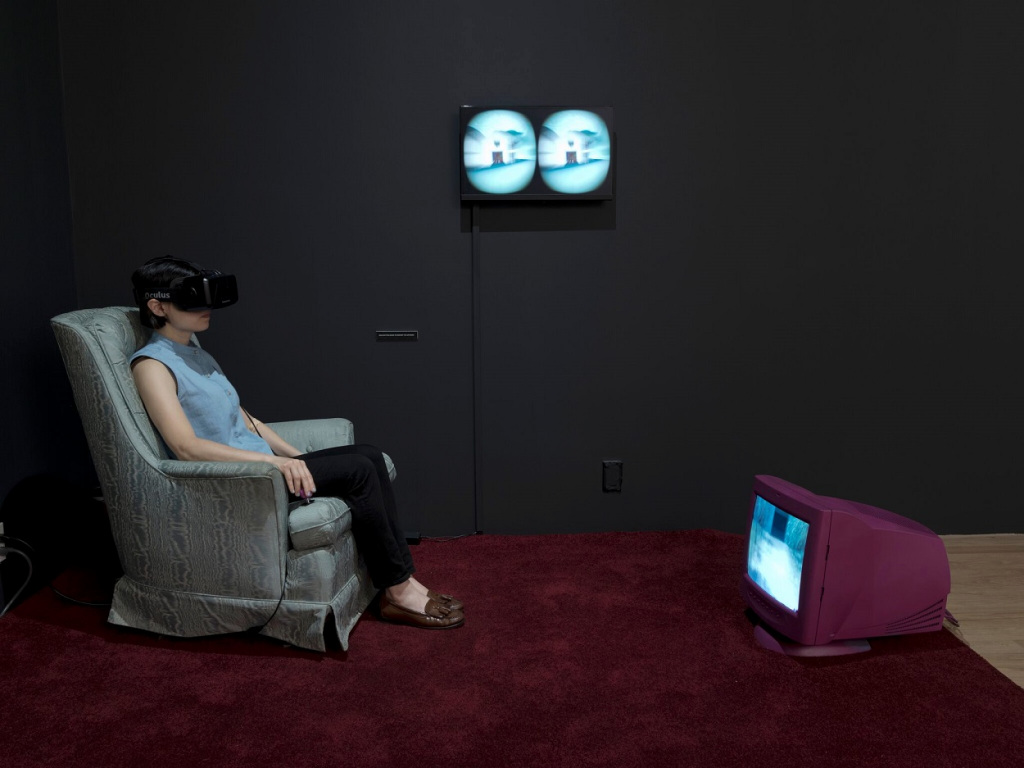[ad_1]
In the winter of 2017, I was visiting the Stedelijk Museum with net art pioneer Jan Robert Leegte to see an exhibition of recent acquisitions. He was excited to show me his influential work Scrollbar Composition (2000). After winding through pristinely lit galleries filled with impressive paintings and sculptures, we arrived at a rather modest, dimly lit room where a series of browser-based works were shown in touch-screen vitrines. I noticed Leegte’s expression of pride deflate into one of frustration.
I looked down at the screen. Instead of Leegte’s work I saw google.com, logged into someone’s personal Google account, running on a contemporary browser instead of the modified version of Internet Explorer the work was made for. We had a gallery attendant call someone to rectify the situation, but Leegte worried this would happen again.
As we exited, Leegte joked: “Well, I guess I wasn’t specific enough in my instructions.”
The experience stuck with me. Seeing Scrollbar Composition in that condition was like encountering a painting hung upside-down, or walking into a gallery and finding a rolled-up canvas in a packing tube. It was heartbreaking that a work honored with acquisition by a major contemporary art museum could not be viewed properly. It reminded me of countless other times I have encountered blank monitors and Windows update screens in reputable museums. I’ve heard horrifying anecdotes from artists of audio speakers left unplugged for the duration of an exhibition, dimmed projector bulbs, and VR headsets in permanent Kiosk mode. What had happened between the installation process, when Leegte gave instructions on how his work should be displayed, and our visit? Leegte joked that it was his fault. But the truth is that the museum mishandled it.
Leegte belonged to a net art community that worked outside the establishment, among artists who had—and still have—low expectations for the institutional reception of their work. But the younger generation of media artists is more professionalized. They understand how installation can impact the perception of their work. They want more from exhibition opportunities. These artists are putting more care into installation instructions. Yet institutions still have not caught up.
Sarah Rothberg is a media artist who provides abundant documentation with diagrams, directions, and requests to be contacted if any problems occur. She sent me instructions for her VR installation Memory/Place: My House (2014–15), which included guides for start-up and shut-down, as well as a section on troubleshooting, all indexed in a table of contents. Its pictures, diagrams, renderings, and joystick schematics all meant to assist installation staff and gallery attendants.
Courtesy the artist
Manuals like Rothberg’s have become increasingly necessary for media artists. Small Data Industries is a Brooklyn-based consultancy for the conservation of new media art. Founder Ben Fino-Radin said in an interview that many emerging artists working in time-based media don’t know how to create an iteration report. Such a document includes detailed explanation of the decision-making process behind production, installation, and preservation. Even thorough instructions like Rothberg’s don’t outline the rationale behind the technology. An iteration report outlines “every little decision, and who made that decision,” as Fino-Radin put it, showing not merely how a work is installed, but why each step is done that way. Embedding that information into guides can help curators and installers unfamiliar with media work to better understand an artist’s process, and properly stage the work when an artist can’t be present for install or ongoing maintenance. Fino-Radin emphasized that the more artists do to share their process through documentation and studio visits, the better they can ensure a successful exhibition and the longevity of their artwork.
To that end, Small Data Industries is releasing a series of open source guides for anyone working in time-based media with limited resources. In a newsletter announcing the initiative, Fino-Radin spoke of the importance of making his company’s expertise available as a community resource, and encouraged artists, collectors, and preservation specialists to let the organization know what more it can do to further its mission. This is an important moment for artists and administrators to avail themselves of these resources, especially since all other plans are on hold indefinitely.
Courtesy Small Data Industries.
Small Data Industries aims to give artists the tools they need to define the proper presentation of their work. Amanda Hudgins, an artist who designs alternative interfaces for video games and interactive art, wants to assign more responsibility to institutions. In our interview, she talked about the importance of rigorous testing prior to exhibition, running media artworks for at least thirty-six hours to ensure that any malfunctions or unexpected outcomes are caught before public reception. Taking a page from game design standards, she thinks artists should thoroughly “play test” projects with museum staff by letting them engage, experience, and try to “break” the piece in order to understand how the artwork will perform under the pressure of impulsive audiences.
Running a gallery like a lab takes a lot of time—a costly resource at cultural venues. But over time collaborative efforts between artists and administrators could result in well-documented standards that supersede trial-and-error approaches. Though organizations like Rhizome and Small Data Industries tout the importance of preservation—a field plagued with its own technical issues—we need to think more about display. Artists have been shouldering that burden as they steward their own careers. It’s time for institutions to approach the problem with the same amount of care.
[ad_2]
Source link


